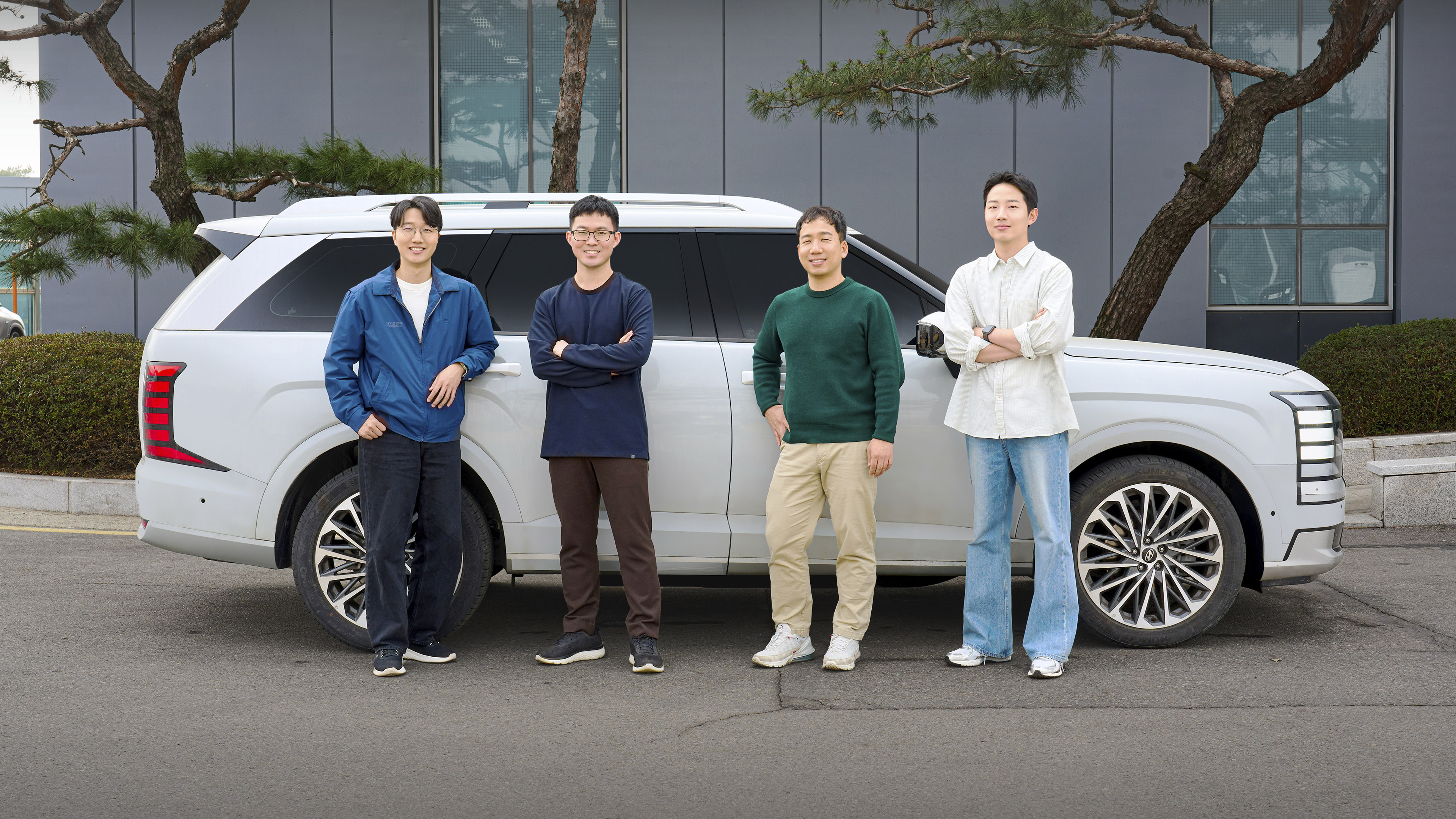
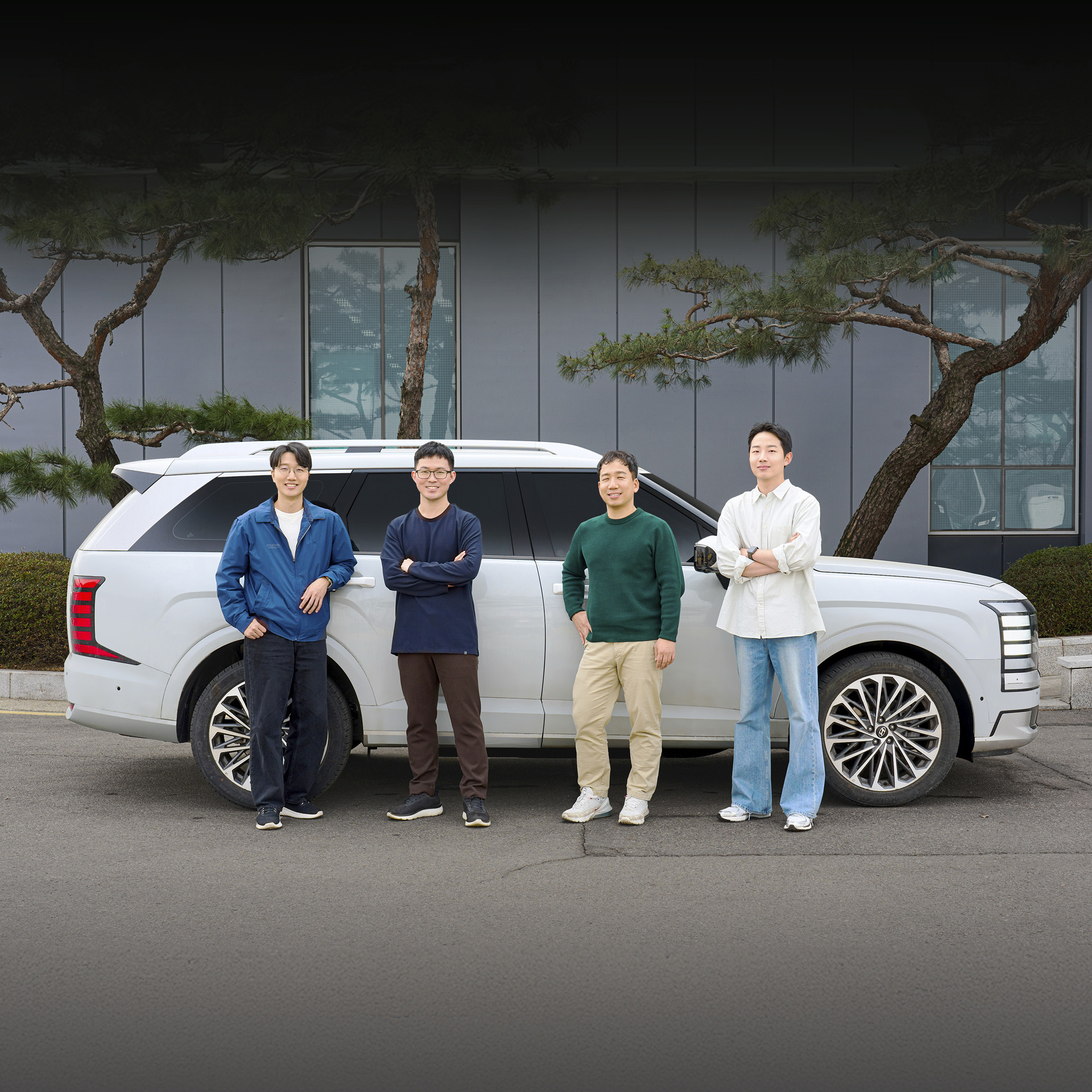


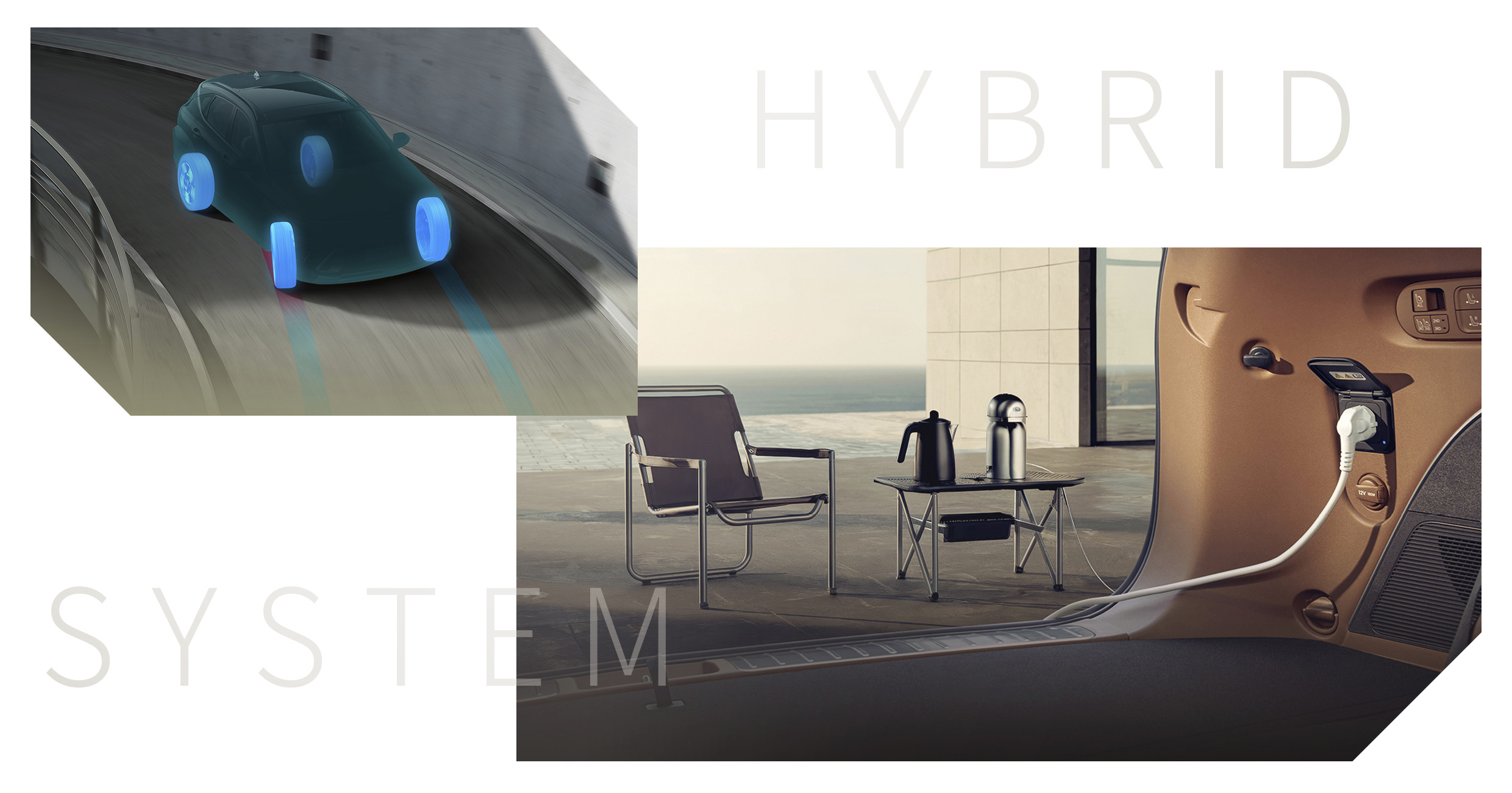
Thanks to major technological advances, today’s hybrids are a completely different breed from their predecessors. One major area of progress: driving dynamics and the expansion of electrified experiences. While early hybrids were laser-focused on efficiency alone, HMG’s hybrids have been evolving for years to deliver a richer, more exciting experience.
At the heart of this evolution is HMG’s e-VMC (Electrification-Vehicle Motion Control) technology, featuring innovations like e-Handling and e-Ride. e-VMC optimizes motor control to improve agility and stability during cornering and lane changes, and enhances ride comfort when crossing speed bumps or during rapid acceleration.
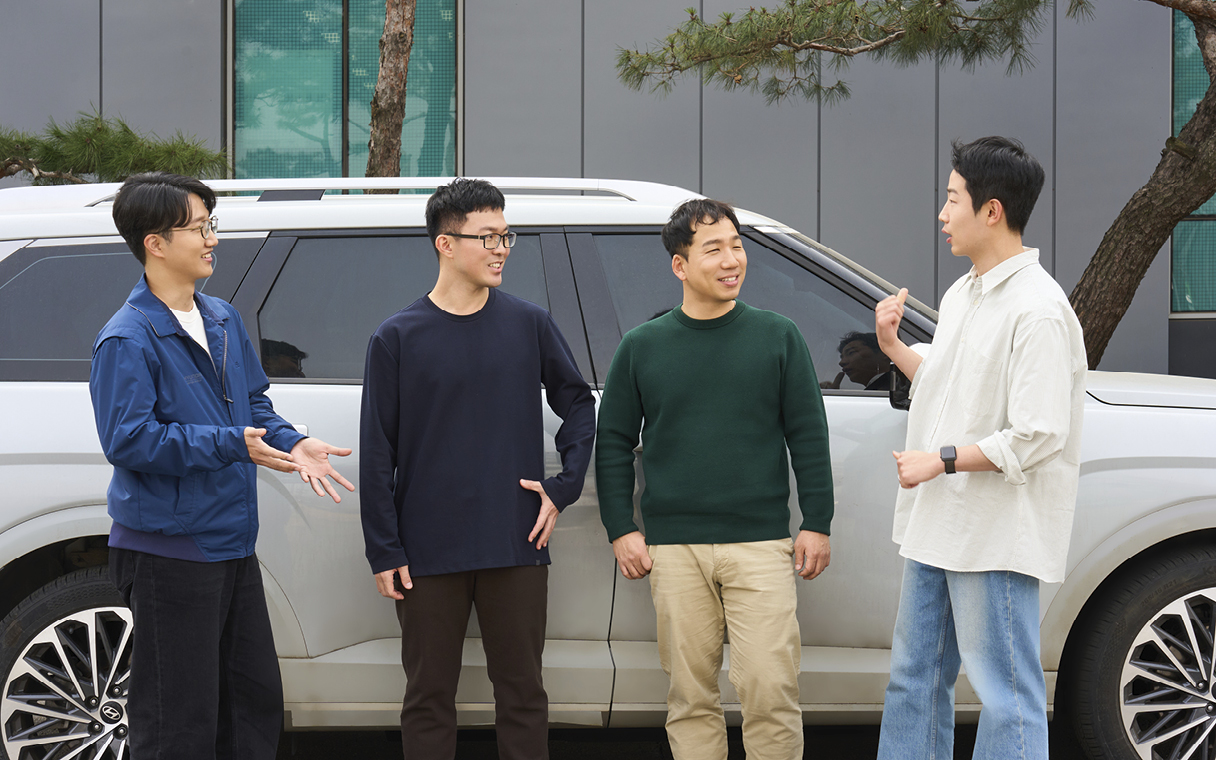
HMG’s hybrid technology continues to evolve, pushing toward even greater driving dynamics and new electrification experiences. Under the banner of the 'next-generation hybrid system,' HMG is preparing to roll out cutting-edge innovations like e-VMC 2.0, which delivers enhanced vehicle performance through advanced control technologies; e-AWD, a new type of all-wheel drive made possible by a rear electric motor; and convenience features like Stay Mode and V2L, once exclusive to EVs. In short, HMG’s next-gen hybrids are poised to deliver new driving experiences that once seemed purely the stuff of imagination.
Senior research engineer Jae-il Park from the Chassis Control Research Lab, senior research engineer Gyeong-cheol Kim from the Electrification System Design Team, research engineer Yong-joo Lee from the Vehicle Energy Control Development Team, and senior research engineer Jong-eun Byun from the Converter Design Team are here to deliver the full story.
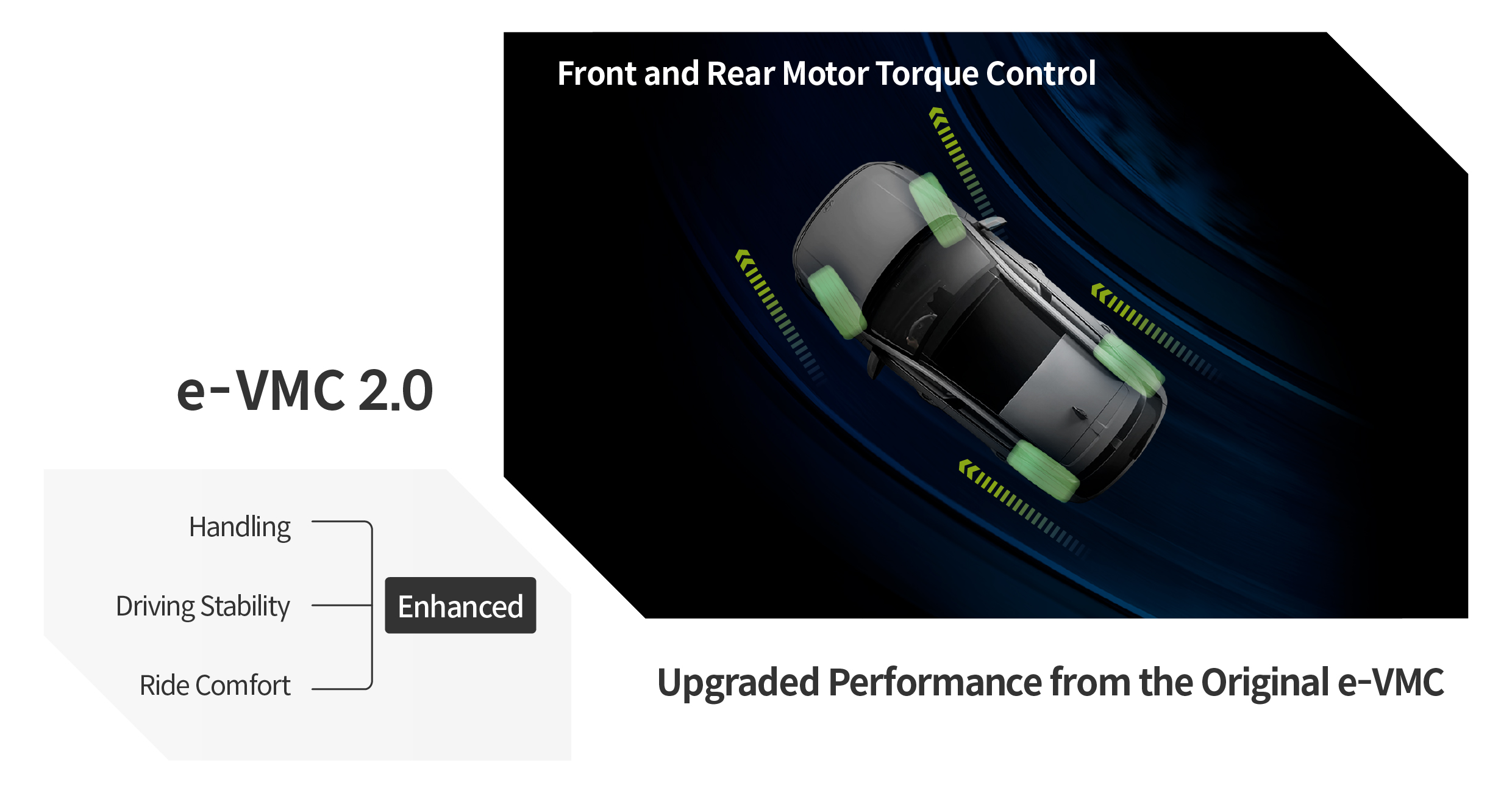
Q. e-VMC 1.0 was widely praised in earlier HMG hybrids.
Before we dive into what’s new, could you explain what e-VMC 1.0 accomplished?
Senior research engineer Jae-il Park | e-VMC 1.0 took hybrids beyond just efficiency. We proved that, with smart motor control — no extra mechanical hardware — you could dramatically enhance both ride comfort and handling performance. It was a breakthrough that redefined hybrid expectations.
Q. e-Handling and e-Ride were key parts of e-VMC. What do those features do?
Park | e-Handling, one of the core technologies included in e-VMC, improves driving performance by shifting the vehicle’s center of gravity using precise acceleration and deceleration control of the drive motor. Put simply, when a car decelerates, its center of gravity shifts forward, and when it accelerates, the center shifts rearward. e-Handling actively leverages this principle: by shifting the weight forward during deceleration, it enhances cornering agility, while shifting it rearward during acceleration improves stability during turns. In essence, e-Handling fine-tunes the motor control during cornering to improve both front and rear wheel responsiveness and overall vehicle stability in a hybrid vehicle.
Meanwhile, e-Ride is a technology aimed at improving ride comfort by minimizing the vehicle’s vertical body motions, especially when crossing speed bumps, and enhancing acceleration comfort. e-Ride 1.0 controls the motor’s acceleration and braking forces to suppress pitch motion— the fore-aft rocking of the vehicle. For example, when climbing a speed bump, motor braking control reduces the upward lift of the vehicle’s front end. Conversely, when descending from the bump, motor drive control minimizes the front-end dive. Additionally, e-Ride predicts when the vehicle’s nose will lift under hard acceleration and adjusts the motor’s torque profile so that drivers can maintain acceleration while perceiving much less upward lift, improving overall driving comfort.
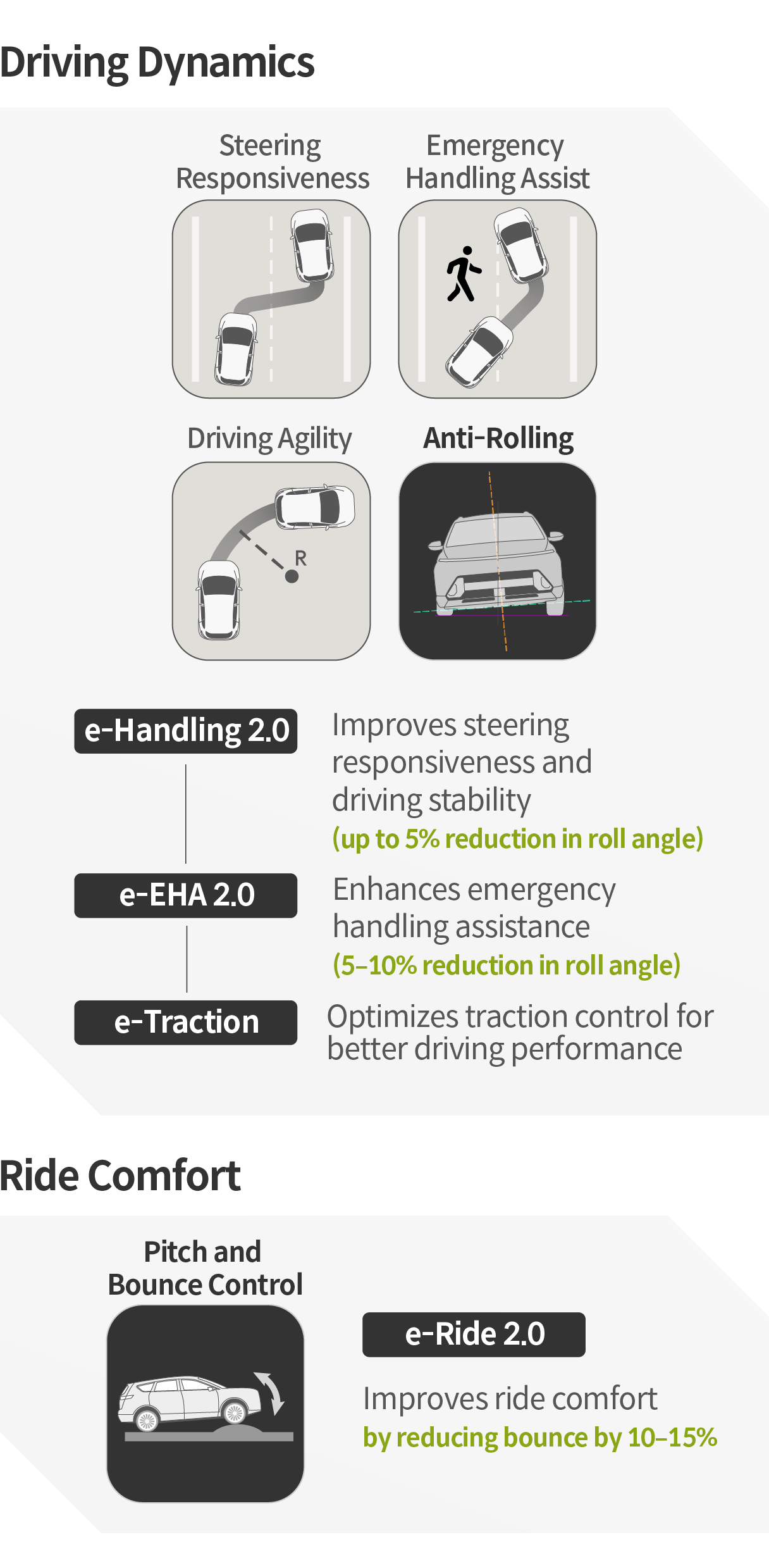
Q. In terms of technology and functionality, how will the upcoming e-VMC 2.0 differ from the original e-VMC?
Park | The biggest difference with e-VMC 2.0 is that it’s built for hybrid systems equipped with both front and rear drive motors. In other words, it can independently control the front and rear motors to dramatically improve both driving dynamics and ride comfort. Traditional hybrid models with only a front motor won’t be able to fully take advantage of what e-VMC 2.0 offers. However, the technical advances gained during the development of e-VMC 2.0 are already being used to continue refining the original e-VMC system. That means even hybrid vehicles with only a front drive motor will soon benefit from enhanced driving performance and a smoother ride.
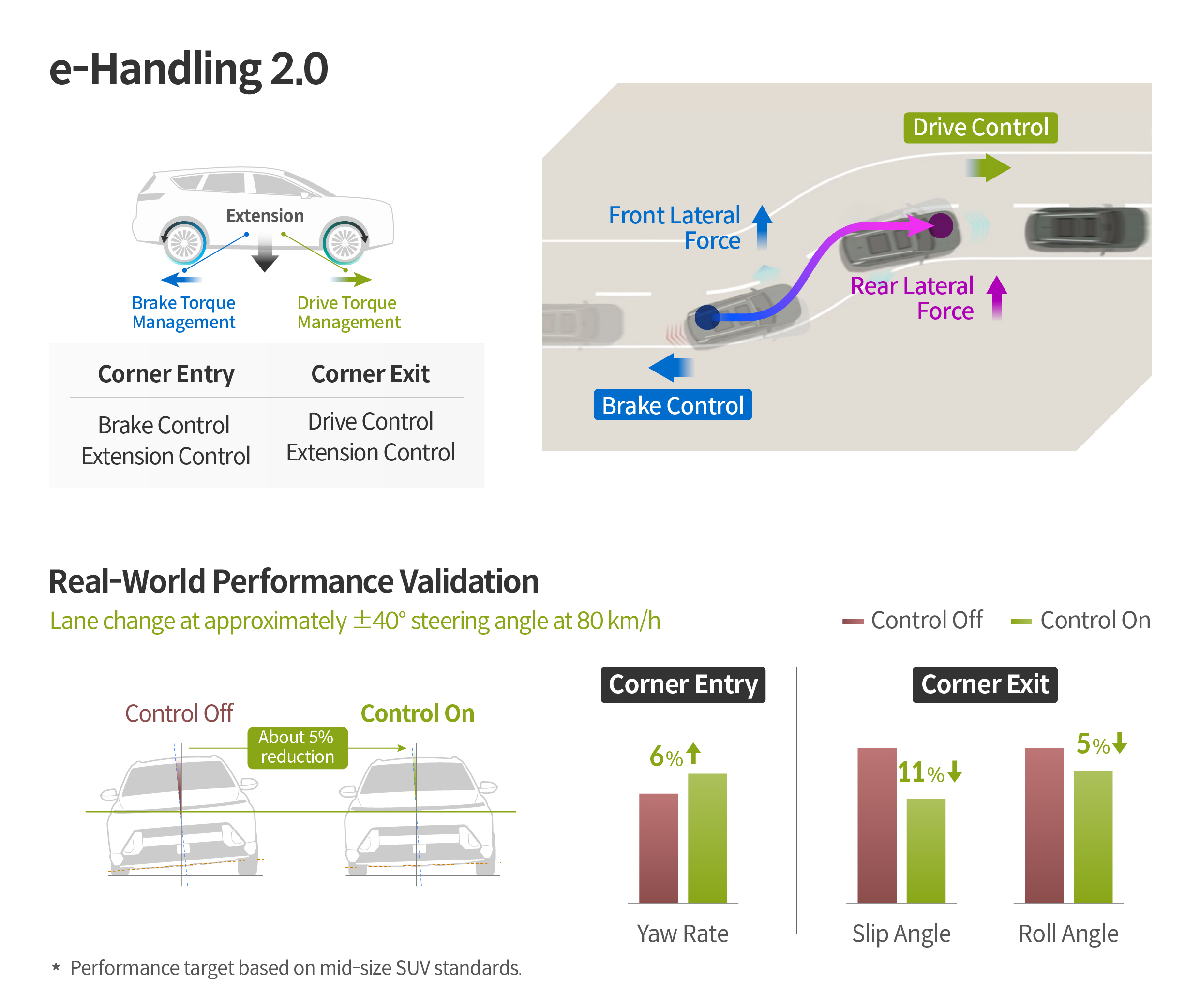
Q. Does e-VMC 2.0 also include updated versions of e-Handling and e-Ride? What’s different compared to the first generation?
Park | e-Handling 2.0 now takes things a step further by controlling the front and rear drive motors in opposite directions to reduce body roll during cornering. The original e-Handling mainly used motor acceleration and deceleration, but 2.0 adds a whole new layer of sophistication. To explain it simply: if the front motor accelerates with a force of 10 while the rear motor decelerates with a force of 10, the net force on the vehicle is zero.
From the car’s perspective, this equal and opposite force effectively pushes the center of gravity downward. Think of pulling a blanket evenly from all sides—the way it flattens and presses down onto the floor is the same effect happening to the car’s body. Thanks to this, hybrids equipped with e-Handling 2.0 feel noticeably lower and more planted when cornering, improving both agility and stability.
e-Ride, which enhances ride quality over speed bumps, has also evolved into e-Ride 2.0. Typically, when a car crosses a speed bump, two types of vertical movement occur: pitch (nose-up and nose-down motion) and bounce (overall vertical movement of the body). The original e-Ride mainly controlled pitch by adjusting the motor’s acceleration and deceleration.
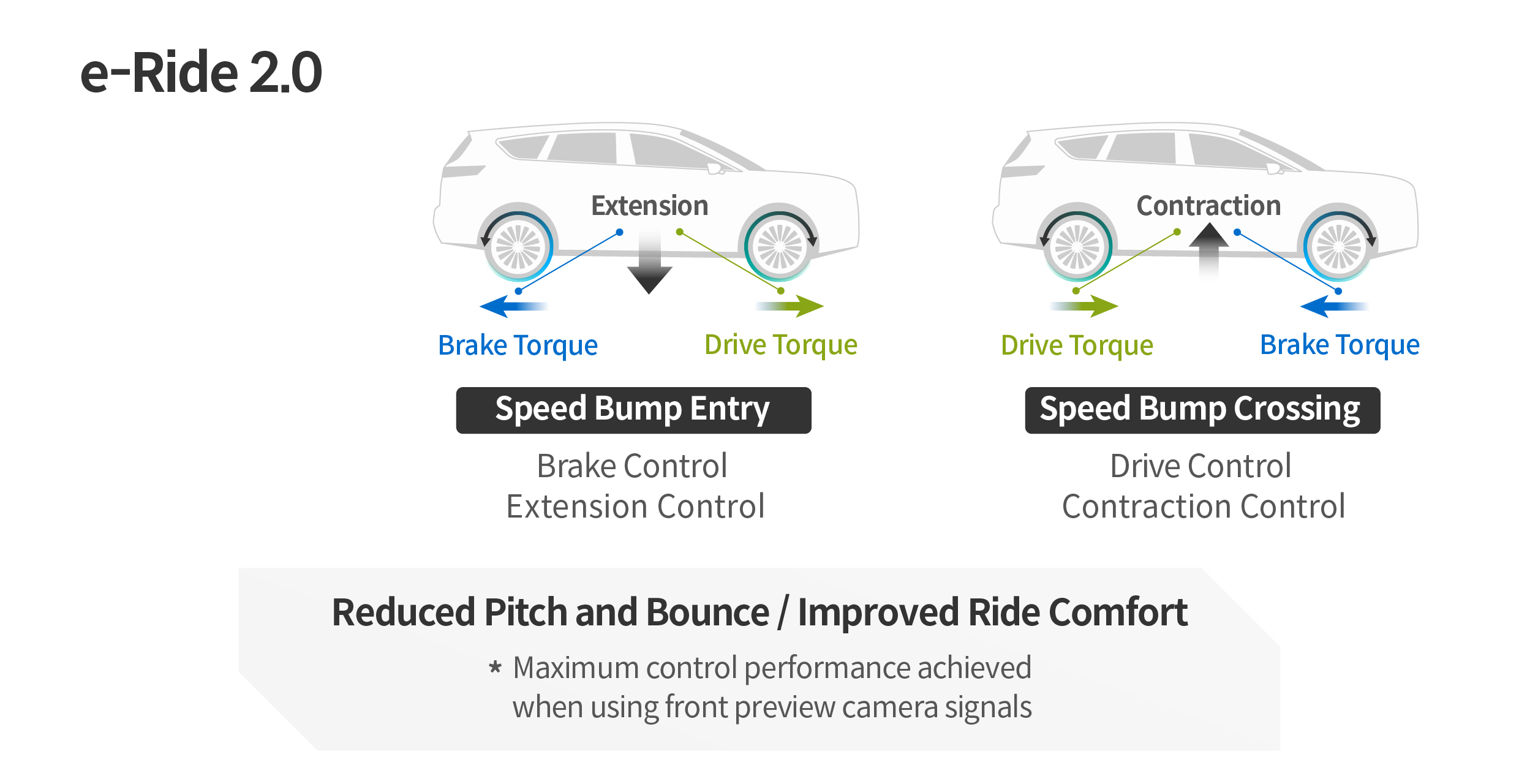
On the other hand, e-Ride 2.0 goes a step further by minimizing not just pitch, but also bounce to dramatically enhance ride comfort. When a vehicle climbs over a speed bump and bounce motion causes the body to lift, e-Ride 2.0 kicks in. The system commands the front motor to drive and the rear motor to brake, which reduces the vehicle's upward velocity. Conversely, as the vehicle comes back down after a bump, the front motor applies braking while the rear motor applies drive torque. This coordinated control minimizes the body's downward speed, leading to a noticeably smoother and more refined ride experience.
Q. e-VMC 2.0 also introduces e-EHA 2.0, an evolution of the original Evasive Handling Assist. What’s new with this system?
Park | e-EHA stands for 'Evasive Handling Assist,' and it’s essentially an emergency steering support system. Using radar, cameras, and other front-facing vision sensors, the system detects potential collision risks. When the driver initiates an evasive steering maneuver, e-EHA immediately engages by using the drive motors to apply braking torque, shifting weight to the front wheels and helping the car respond quicker to the emergency input. After the evasive action, it then drives the motors to shift load toward the rear, helping the vehicle regain its stability as fast as possible. That was the basic operating principle behind e-EHA 1.0. The newly enhanced e-EHA 2.0 now takes it even further — by commanding the front and rear motors to work in opposite directions after the evasive maneuver, it improves roll stability during the recovery phase. This principle is exactly the same as the one used in the upgraded e-Handling 2.0 system.
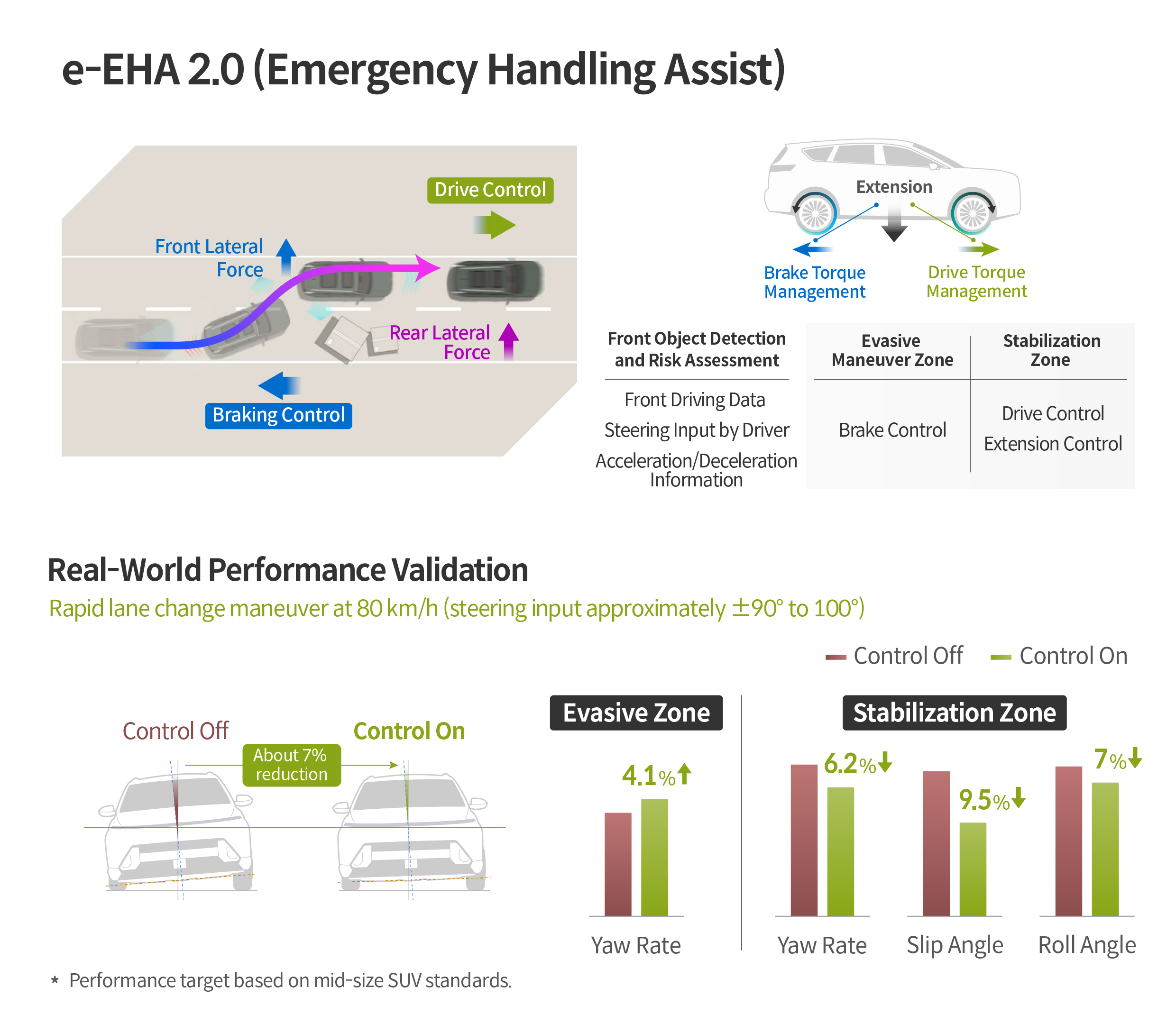
Q. e-VMC 2.0 upgrades from a front-motor-only setup to a full dual-motor control system. Why was independent front and rear torque control introduced?
Park | We wanted to offer customers more than just incremental improvements. By moving to a dual-motor setup — with independent control of front and rear drive forces — we could deliver major gains not only in traction and launch performance on low-friction surfaces but also in the everyday driving experience. It’s not just about better acceleration or getting unstuck in tricky conditions. Drivers will actually feel the difference in how much more composed, responsive, and stable the car feels during normal driving too.
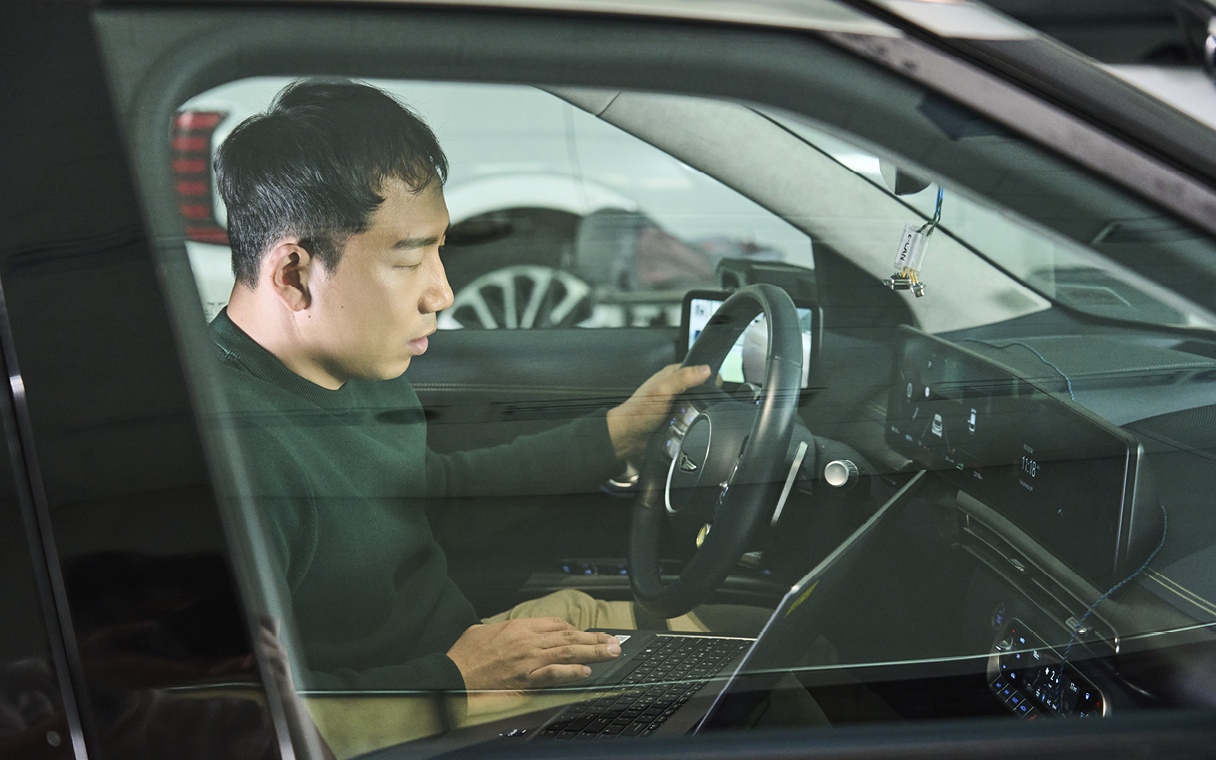
Q. We hear e-VMC is still evolving. How does control change for rear-wheel-drive models?
Park | That’s something we’ve been giving a lot of thought. To create a highly versatile version of e-VMC that can work across front-wheel drive, rear-wheel drive, and AWD layouts, we first conducted advanced research using dedicated EV platforms. Most EVs, unlike hybrids, are based on rear-wheel drive architecture, so this was the logical place to start. By analyzing vehicle drive states and designing control logic that could seamlessly handle both RWD 2WD modes and AWD modes, we were able to validate and refine e-VMC’s capabilities. This enhanced e-VMC will soon make its way into rear-wheel-drive-based hybrid vehicles as well.
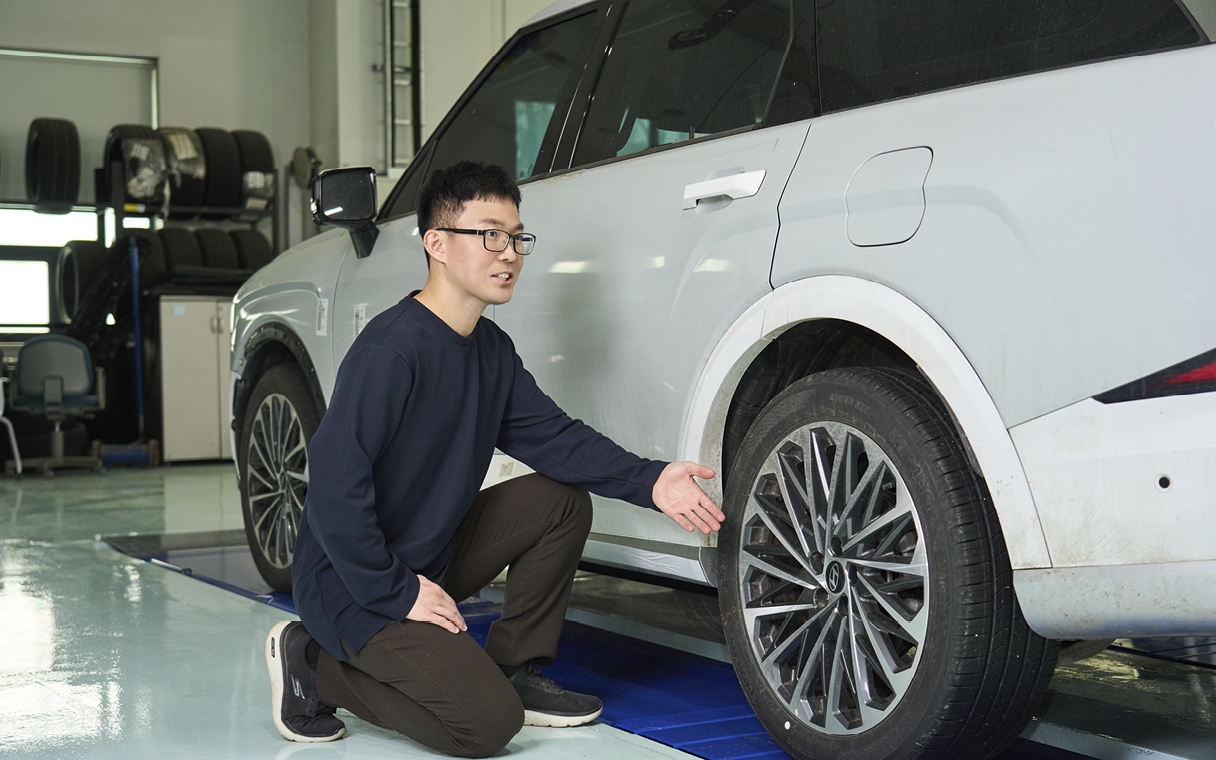
Q. What exactly is the new e-AWD hybrid technology HMG is developing?
Senior research engineer Gyeong-cheol Kim | e-AWD is HMG’s next-generation all-wheel drive technology, powered entirely by electric motors. Unlike traditional hybrid AWD systems — which simply divert part of the front engine power to the rear wheels — e-AWD uses a dedicated rear electric motor to drive the rear axle independently. This structure brings huge benefits. For example, while the front wheels are providing drive, the rear motor can simultaneously handle regenerative braking. This independent front/rear motor freedom translates into major gains in handling, performance, and efficiency.
With e-AWD, the vehicle has three power sources: the engine, the front drive motor, and the rear drive motor. Depending on the situation, the system can blend these sources to optimize traction, power delivery, and overall performance. It also brings dynamic improvements like sharper longitudinal response, tailored output control by driving condition, enhanced cornering dynamics through torque vectoring, and smarter energy use to boost fuel economy.
Q. Specifically, how does e-AWD improve driving performance and efficiency?
Kim | The biggest advantage of e-AWD is maximizing the traction available between the tires and the road surface. It improves launch performance under challenging conditions and leverages regenerative braking on both axles to extract maximum efficiency. Because e-AWD can dynamically adjust the torque split between front and rear motors, it can optimize for a range of goals — better traction, improved handling, safer cornering, and even better fuel economy — all based on real-time driving conditions.
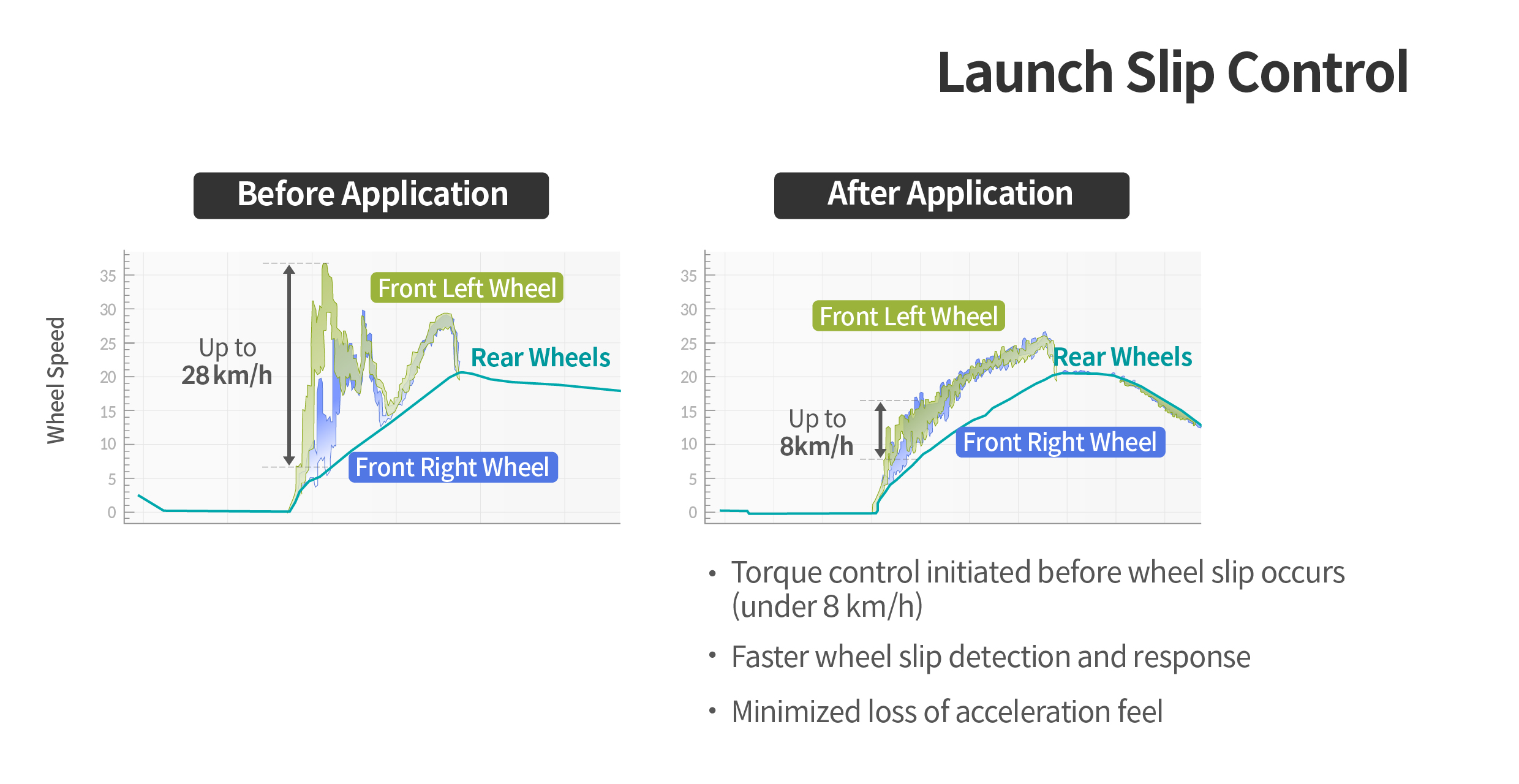
Q. Why is traction between the tires and the road surface so important?
Kim | The traction that moves a car forward ultimately comes from tire grip. However, tire grip is limited by the maximum friction available between the tire and the road surface. If the driving force exceeds that maximum friction, the excess power doesn't actually help the car move — instead, it simply spins the wheels faster, a phenomenon known as wheel slip.’
When wheel slip occurs, energy that should be used for acceleration is wasted in spinning the tires. To accelerate efficiently, it’s critical to minimize wheel slip. That’s where ‘Launch Slip Control' technology comes in — detecting and correcting slip as quickly as possible to maximize grip and preserve energy.
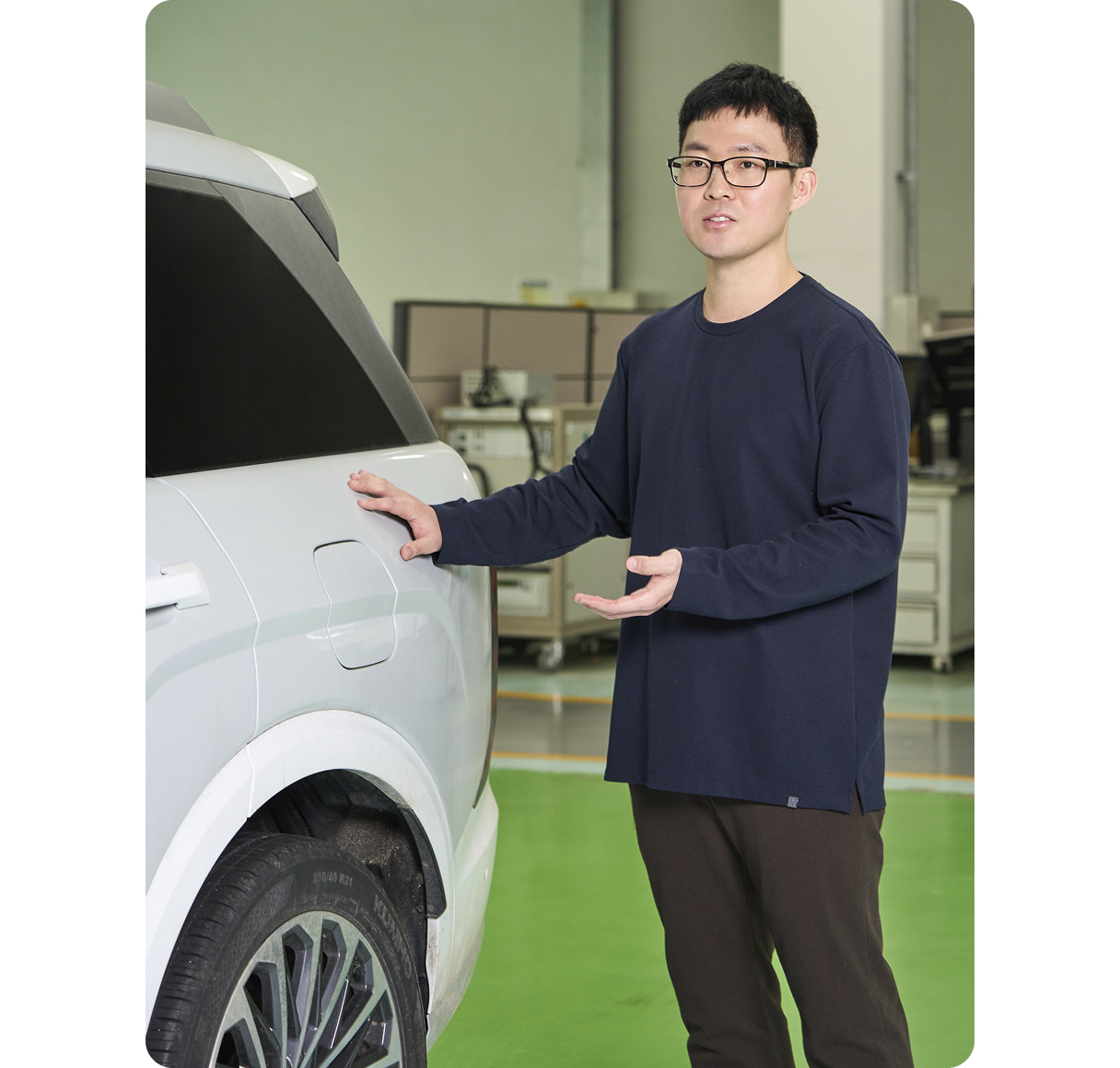
Q. How does e-AWD’s Launch Slip Control detect slip faster and minimize energy loss?
Kim | Building on what I just explained, conventional wheel slip detection is typically speed-based — meaning slip is detected only after it has already occurred. That’s the limitation of most traditional systems. Our e-AWD system, however, uses an inertia-based slip detection method. Instead of waiting for a difference in wheel speeds, it estimates something called ‘equivalent inertia’ through the drive motors. In simple terms, if the motor 'feels' a heavy load, it interprets that as normal traction. If it senses a light load, it recognizes that wheel slip is occurring.
Because of this approach, e-AWD can detect the onset of slip far earlier — even before it becomes significant — allowing the system to control slip proactively rather than reactively. As a result, launch performance improves dramatically. Even better, because the system independently estimates the equivalent inertia at the front and rear motors, it can independently detect and control wheel slip at both axles for maximum traction and performance.
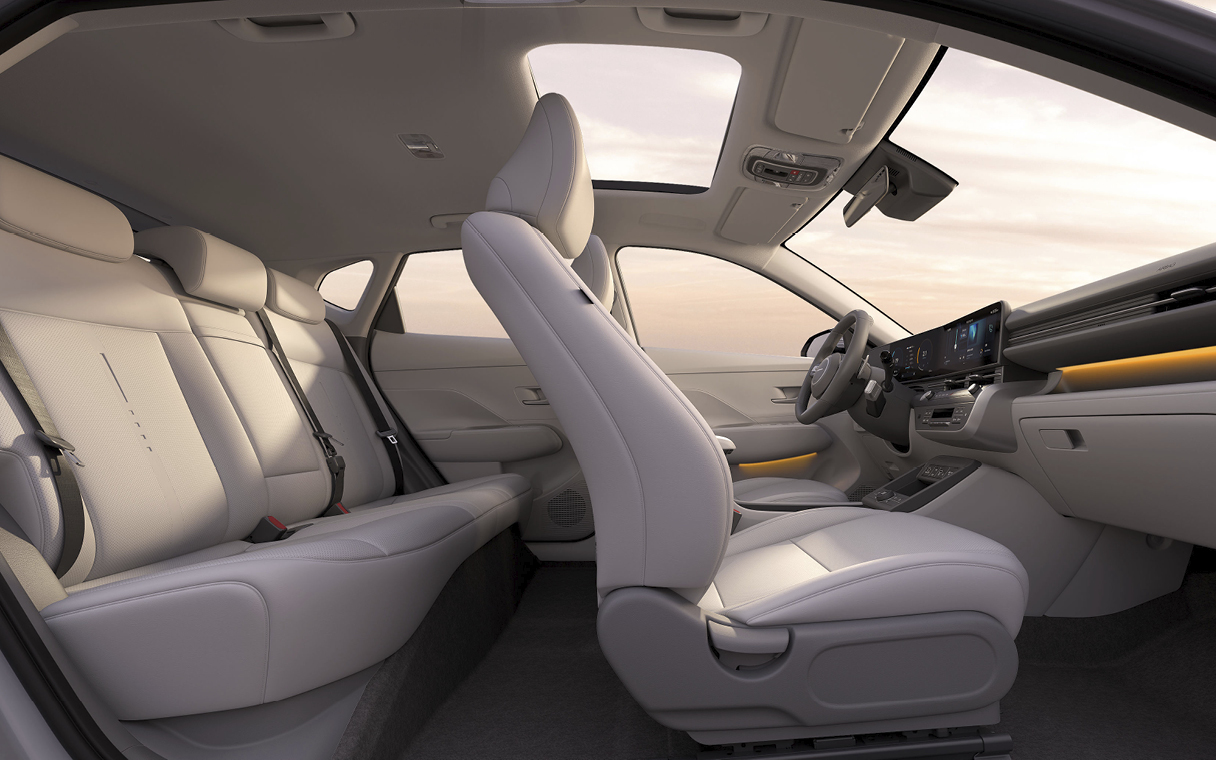
Q. Without a propeller shaft running under the floor, does e-AWD also help with interior packaging, like rear seat space?
Kim | Exactly. In a conventional car, the center tunnel serves two major roles: one, to house the muffler and propeller shaft; and two, to provide additional structural rigidity to the body. When developing e-AWD, we aimed to meet both of those traditional requirements while maximizing rear passenger comfort. Thanks to the removal of the mechanical propeller shaft, the center tunnel height could be lowered by about 40mm compared to a typical internal combustion 4WD setup — freeing up valuable space for rear passengers without compromising chassis strength.

Q. What exactly is the Stay Mode, your next-gen hybrid system?
Research engineer Yong-joo Lee | In a typical hybrid, the engine will frequently start and stop even when the vehicle is stationary, creating idle noise and vibrations. For customers who want to enjoy a quiet break inside their vehicle, this can be an inconvenience. That’s where the idea for Stay Mode began — we asked ourselves, 'Can we make a hybrid car offer the same serene environment as an EV?' Stay Mode is our answer. It allows the car to power major convenience features — air conditioning, the infotainment system, electric seats, and more — directly from the high-voltage drive battery, without having to start the engine.
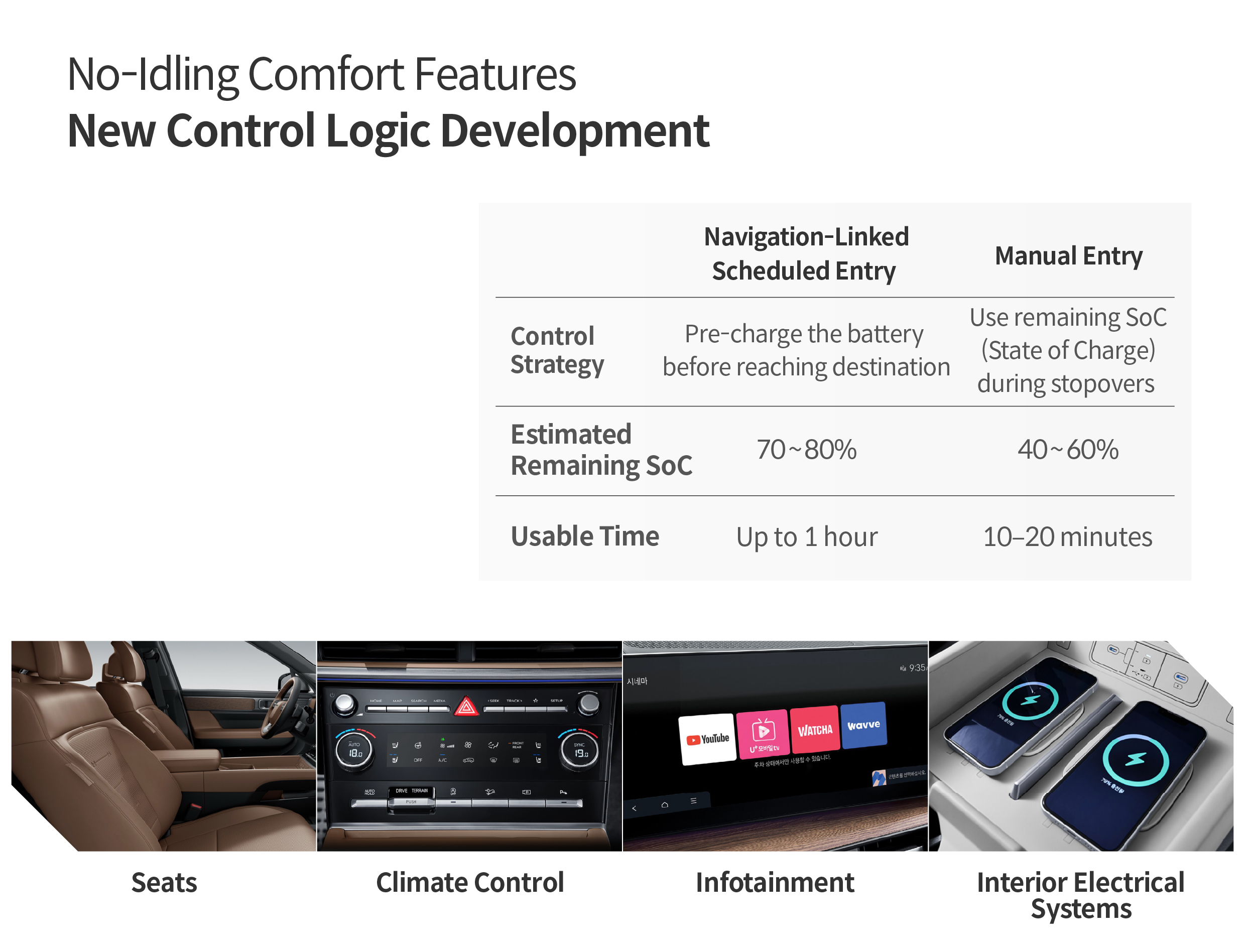
Q. Stay Mode sounds similar to the Utility Mode found in EVs. How are they different?
Lee | You're right — the basic idea behind Stay Mode is very similar to the Utility Mode available in many EVs: using the high-voltage battery to run comfort features without engaging the drivetrain. But from a systems engineering perspective, there are major differences between hybrids and EVs. Unlike EVs, hybrids have an internal combustion engine, transmission, and other related components. To make Stay Mode work seamlessly on a hybrid, we had to develop intricate controls across multiple systems — including the Vehicle Platform Controller (VPC), Engine Management System (EMS), Battery Management System (BMS), Body Domain Controller (BDC), instrument cluster and navigation systems (HU), and various energy management controllers (ATCU/LDC/OPU).
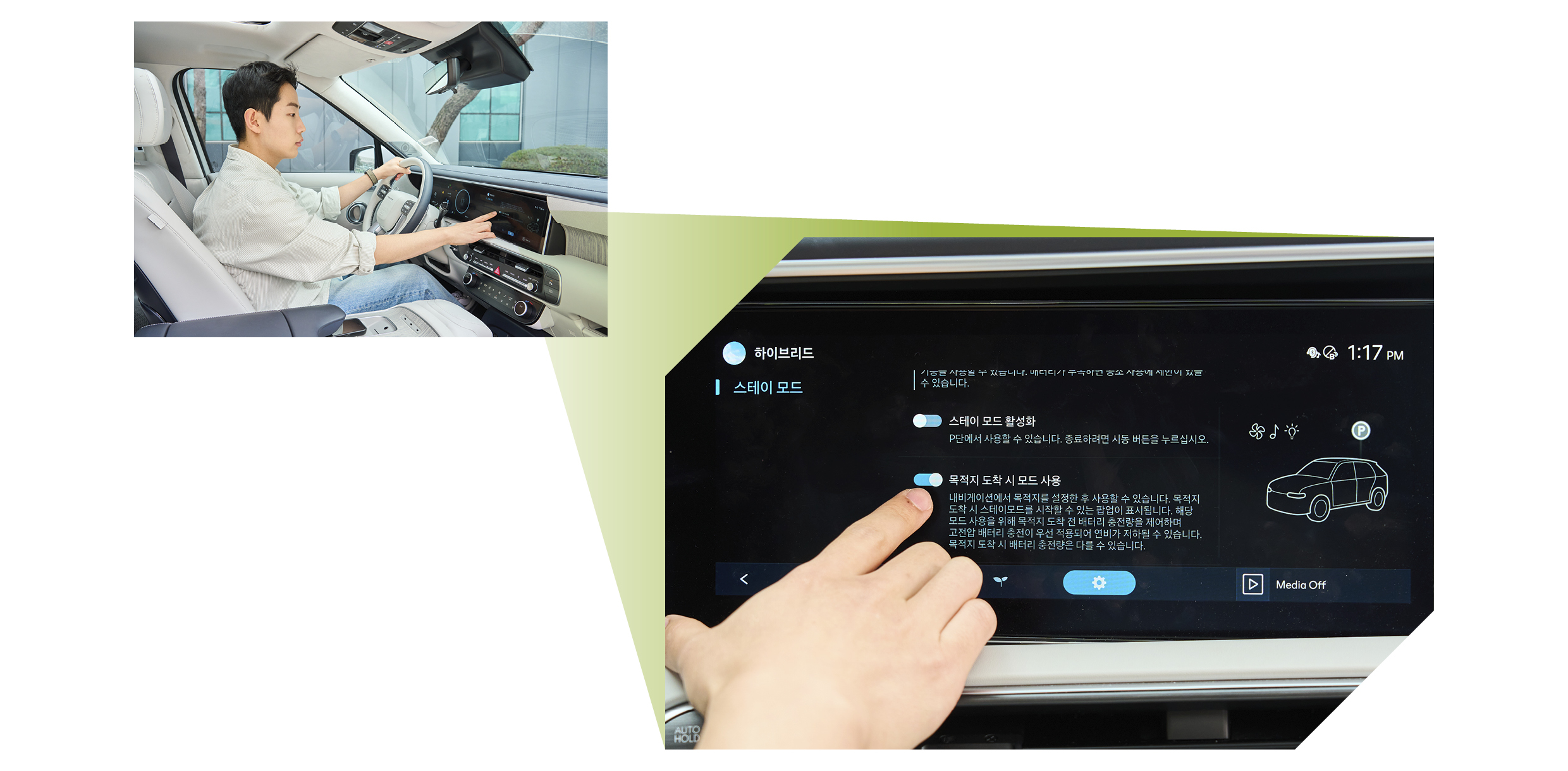
Q. From a user’s perspective, how is Stay Mode in a hybrid different from Utility Mode in an EV?
Lee | One major advantage: Stay Mode supports reservations, something that typical EV Utility Modes don't offer. Plus, unlike EVs, hybrids can recharge their high-voltage batteries using the engine — a unique strength we leveraged.
Here’s how it works: under normal driving conditions, a hybrid’s battery state-of-charge (SoC) is maintained between 40–60%. But if the driver pre-schedules Stay Mode via the navigation system, the vehicle proactively charges the battery to a higher level — up to 80% — before reaching the destination. This ensures the driver can enjoy Stay Mode for longer periods once parked, without worrying about draining the battery.
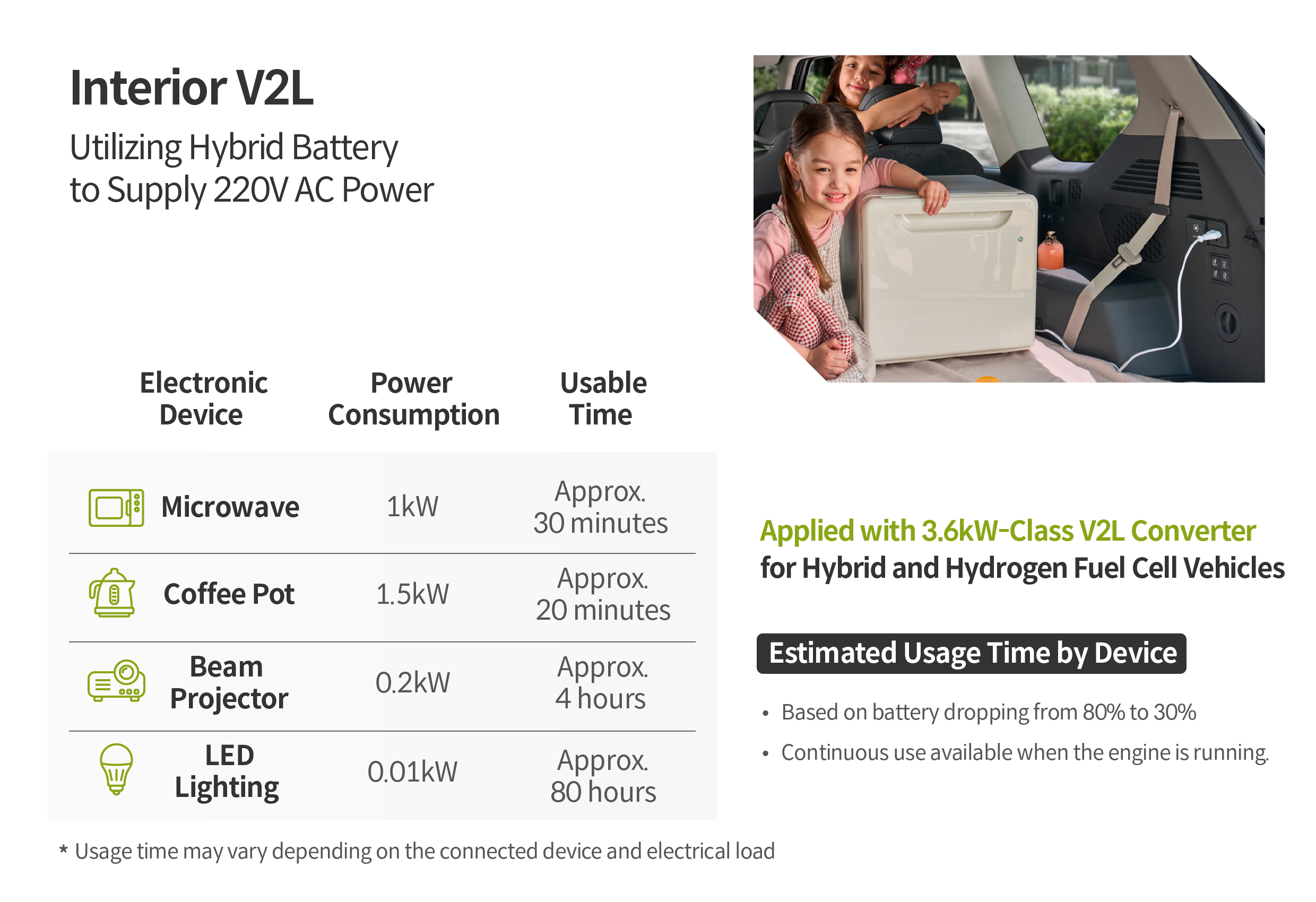
Q. HMG’s next-gen hybrid system also features V2L — usually seen in EVs. Can you walk us through how it works?
Senior research engineer Jong-eun Byun | Just like an EV, HMG’s next-generation hybrid vehicles are equipped with a high-voltage drive battery. What’s new is that we’ve adapted it to support V2L (Vehicle-to-Load) functionality — letting drivers tap into that battery to power external devices. The hybrid V2L setup has a few advantages: because the car can recharge its high-voltage battery using the engine, it’s possible to continuously use V2L simply by engaging the engine as needed. For real-world convenience, we even placed the V2L outlet in the cargo area — perfect for camping or overlanding setups. Of course, you can also use V2L purely from the battery, without engine assist. For example, using just Stay Mode and battery power alone, you could run a 0.2kW projector to watch movies or shows for about four hours. A microwave could be powered for up to 30 minutes, a coffee pot for about 20 minutes, and LED lights could stay on for an impressive 80 hours.

Q: Since V2L requires a high-voltage battery, how did you overcome the challenge of hybrids having smaller batteries compared to EVs?
Byun | Hybrid vehicles do have much smaller high-voltage batteries than full EVs. To work around that, we engineered the hybrid V2L system to recharge automatically. If the battery’s state of charge (SoC) drops too low, the system will automatically start the engine to top up the battery, ensuring continuous V2L use. As long as there’s fuel in the tank, drivers can enjoy virtually unlimited V2L functionality — a major advantage for long outdoor trips. That said, the situation is a little different when using V2L through Stay Mode. Because Stay Mode is designed for silent operation with no engine noise, the engine won’t kick on. This means V2L run time is limited to whatever energy is available in the battery at that moment.
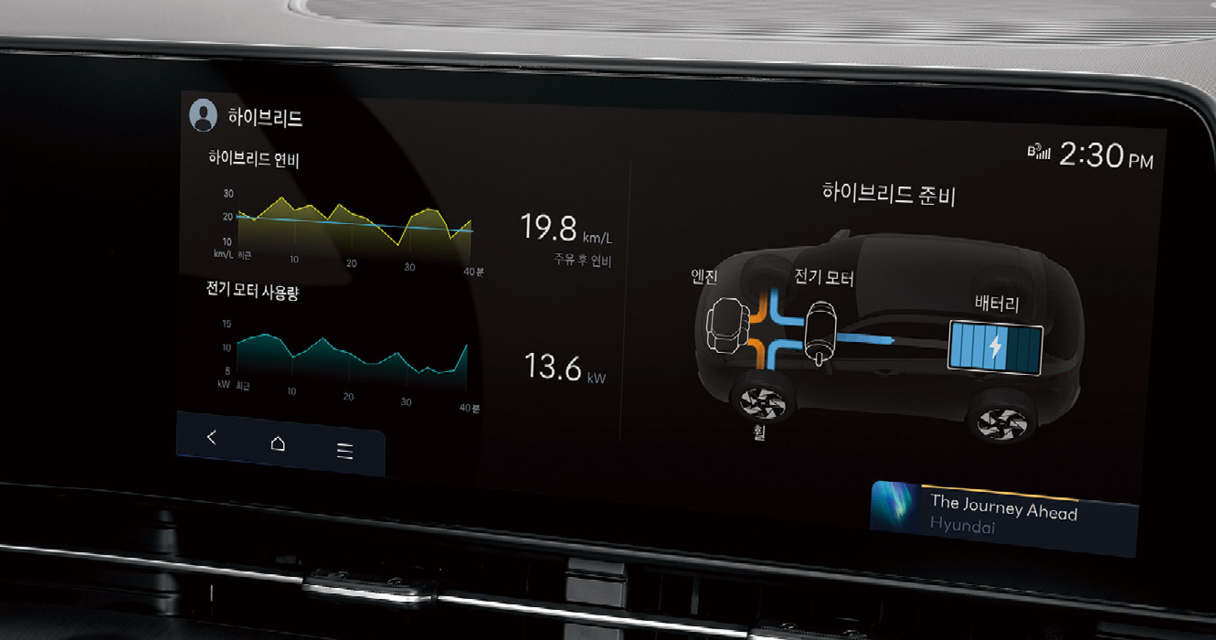
As we’ve seen, HMG’s new hybrid technologies are redefining what hybrids can be. They’re no longer just about better fuel economy — they’re about enhancing driving dynamics, elevating ride comfort, and offering the premium EV-like features that today’s drivers expect. And they’re doing it while still maintaining the efficiency advantage hybrids have always been known for. With innovations like e-VMC 2.0, e-AWD, Stay Mode, and hybrid V2L, HMG’s next-gen hybrids promise a whole new kind of driving experience — and we can't wait to see more drivers experience it.
Photography by Hyuk-soo Cho